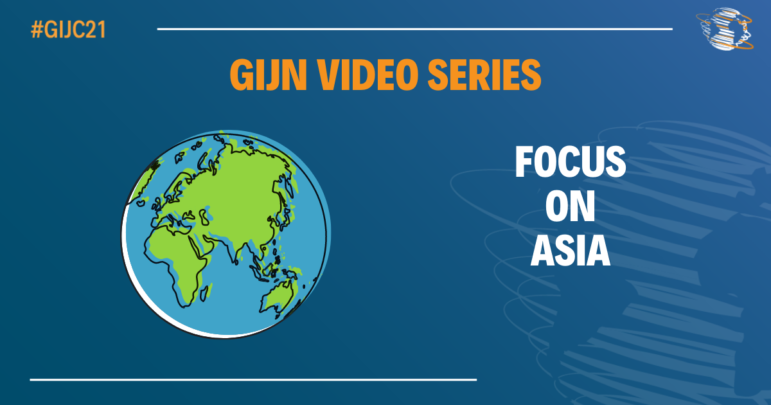

Video Resources for Investigating in Asia/Pacific
For 20 years, the Global Investigative Journalism Conference has helped spread best practices on investigative journalism around the world. Our last conference, in November — co-hosted by the Judith Neilson Institute for Journalism and Ideas — was no different. We’re now releasing videos from the conference, and this week we’re featuring panels from the conference’s Asia/Pacific day, ranging from cross-border collaboration and press freedom to resource exploitation and reporting on China.
Pacific Plunder
Pacific Plunder was an international collaboration by the Guardian Australia, the Judith Neilson Institute, and local reporters that mapped the exploitation of Pacific nations in forestry, mining, fishing, and more. The collaboration also brought together Pacific Island journalists, linking them with an offshore publishing partner that expanded the audience and supported front-line reporters. At this GIJC21 panel, key members of the project explained how the work was done, from sourcing data to visualization.
Asia/Pacific Collaborations
In a globalized world, stories quickly cross international lines. Journalists in the Asia/Pacific region are forming networks and collaborations that are breaking new ground. At this GIJC21 panel, a who’s who of the region’s best cross-border investigative reporters discussed issues they’ve covered: an epidemic of digital sex crimes; wildlife smuggling; coal pollution; and forced labor in the fishing industry.
Insights on Investigating China
How do we report in a knowledgeable, nuanced, and in-depth way on China? With its economic clout and growing military strength, China wields enormous influence across Asia, the Pacific, and the world, yet it’s increasingly difficult to get reliable information out of the country. Independent journalism is being strangled not only on the mainland but now in Hong Kong, while international correspondents posted in China are being expelled. This panel of GIJC21 speakers outlined strategies for investigating one of the most important countries — and stories — of our time.
Press Freedom in Asia
Countries across Asia — from Afghanistan to China, Sri Lanka to Myanmar — have suffered an alarming erosion of media freedoms in recent years, with heavy censorship, internet restrictions, blatant persecution of the press, covert surveillance, and physical attacks against reporters. In this important GIJC21 panel, leading journalists with years of experience working in Myanmar, China, India, and Hong Kong discussed the threats to press freedom in Asia, and the techniques they’re using to fight back.
Previous installments of this GIJC21 video series include “Investigating Organized Crime and Corruption,” “Investigating with Data,” “Funding Your Investigations and Business Strategies,” “Health, Women, Podcasts, & Indigenous Issues,” “Reporter Safety and Security,” and “Investigative Tips and Tools.” See GIJN’s YouTube channel for more.
Additional Resources
Curbing Asia’s Free Press: Propaganda Has Limits









